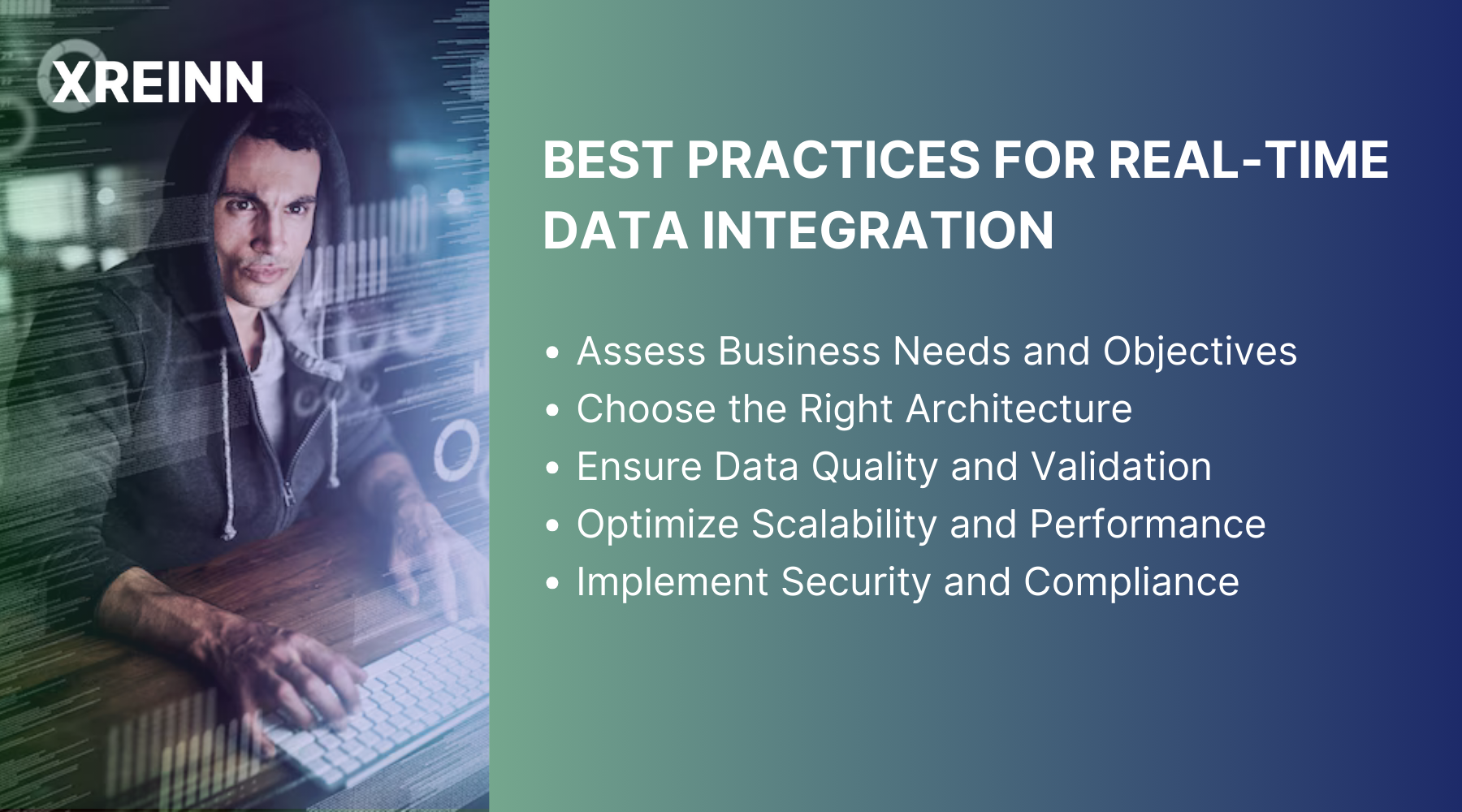Data Integration
5 Best Practices For Seamless Data Integration For Better Performance
Aug 01, 2024
Real-time data integration is quickly becoming the gold standard for managing data. By processing and storing data as soon as it’s collected from various sources, you get the most current information for decision-making. Without effective data integration, your organization might struggle with operational efficiency, flexible responses, imaginative customer engagement, and informed business decisions. Modern enterprises face a lot of pressure from users demanding better performance and faster data flows.
Here we explore the best practices and architectural strategies to help you transform raw data into valuable business insights, keeping you ahead of the competition.
What is Real-Time Data Integration?
Real-time data integration involves capturing, processing, and delivering data as soon as it's created. Unlike batch processing, which handles data at set intervals, real-time integration ensures data is always current. This allows for swift responses to changing conditions, which is important for businesses that depend on the most up-to-date information for decision-making. By implementing real-time data integration, you can improve your organization’s flexibility and responsiveness, providing a competitive edge in a fast-paced environment.
Best Practices for Real-Time Data Integration

Assess Business Needs and Objectives
To implement real-time data integration effectively, start by assessing your business needs and objectives. Identify key business processes that will benefit from real-time data and determine the specific data sources and types required. Aligning your integration efforts with business goals ensures you focus on the most critical data. Engaging stakeholders in this process helps organize and manage your data integration projects efficiently.
Choose the Right Architecture
Choosing the right architecture is essential for real-time data integration. Change Data Capture(CDC) is a highly effective approach, tracking real-time changes by capturing and storing data modifications. This keeps your data warehouse current and accurate. For storage, consider using data lakes and data warehouses.
Data lakes store raw data in its native format, offering flexibility with schema-on-read capabilities, while data warehouses provide structured storage optimized for query performance. Combining both offers flexibility and performance Combining both offers flexibility and performance, enabling you to store raw data and quickly retrieve processed information.
Ensure Data Quality and Validation
Maintaining data quality is vital in real-time data integration. Implement data profiling tools to analyze data for completeness, accuracy, and consistency. Regularly cleanse data to remove duplicates, correct errors, and standardize formats. Continuous data validation processes help maintain high data quality, which is essential for reliable business decisions. By maintaining high data quality, you ensure that your business operations are based on accurate and trustworthy information.
Optimize Scalability and Performance
Scalability is essential as your data volumes grow. Use cloud services to dynamically scale resources based on demand. Apply techniques like partitioning and indexing to improve query performance and manage large datasets efficiently. Regularly monitor system performance and adjust resources to prevent bottlenecks. Ensuring that your data integration system can scale effectively helps maintain performance and reliability as data volumes increase.
Security and Compliance
Data security and compliance are non-negotiable aspects of real-time data integration. Implement powerful security measures such as data encryption and access control to protect sensitive information. Ensure compliance with regulations like GDPR and CCPA by regularly auditing your data processes and updating security protocols as needed. By prioritizing data security and compliance, you protect your business from potential violate and legal issues.
Real-Time Data Integration Architecture Components
Data Sources
Identifying and connecting your data sources is the first step in real-time data integration. Common sources include databases, ERP systems, CRM systems, and IoT devices. Use pre-built connectors to establish seamless data extraction from these sources. By ensuring reliable connections to your data sources, you enable a smooth flow of data into your integration system.
Ingestion Layer
The ingestion layer captures and buffers incoming data. Use tools such as Kafka or Apache Nifi for real-time data ingestion. These tools can handle high data volumes and ensure smooth data flow into the integration pipeline. Implementing an efficient ingestion layer is important for maintaining the speed and reliability of your data integration processes.
Processing Layer
Once data is ingested, it needs to be processed in real-time. Tools like Apache Flink andare ideal for this task. They allow for real-time data processing, transformation, and enrichment. Define transformation rules to format the data, extract specific fields, and enrich it with additional information from other sources. Effective real-time processing ensures that the data is ready for immediate analysis and use.
Storage Layer
Choosing the right storage solution is important for efficient data management. Data lakes like Azure Data Lake Storage or AWS S3 are excellent for storing raw, unstructured data. Data warehouses like Snowflake or Google BigQuery are optimized for structured data and offer high-performance query capabilities. A hybrid approach, using both data lakes and data warehouses, can provide flexible and efficient storage options. This ensures that your data is accessible and usable regardless of its format or structure.
Access Layer
The access layer provides the interface for real-time analytics and reporting. Tools like Power BI and Tableau can connect to your data storage solutions, offering powerful visualization and reporting capabilities. This layer ensures that end-users can easily access and analyze real-time data, enabling informed decision-making. Providing a user-friendly access layer helps democratize data access across your organization, allowing more stakeholders to benefit from real-time insights.
Implementing Real-Time Data Integration
Develop a Roadmap
Create a detailed implementation roadmap. Outline each step of the process with realistic milestones and goals. This keeps your project on track and aligned with business objectives. Involve key stakeholders in planning to ensure their needs are met and to gain their support. A well-defined roadmap helps manage expectations and keeps your project aligned with business objectives.
Select Tools and Platforms
Select tools and platforms based on data volume, complexity, and performance requirements. Compare cloud-based solutions and on-premises options to determine the best fit for your business needs. Consider factors such as scalability, cost, and integration capabilities when making your choice. Choosing the right tools ensures that your data integration system is powerful, scalable, and capable of meeting your specific requirements.
Monitor and Maintain the System
Continuous monitoring and maintenance are more significant. Use monitoring tools to track performance and detect issues in real time. Regularly update systems and perform maintenance tasks to ensure optimal performance and reliability. Set up alerts to proactively address potential problems and maintain system health. Data integration efforts need proactive monitoring and maintenance to prevent failures.
Conclusion
Real-time data integration is vital for businesses that want to remain competitive and responsive. By following best practices and establishing a strong architectural foundation, you can turn raw data into valuable insights, improving decision-making and operational efficiency. This strategy ensures your data is always up-to-date, enabling quick responses to evolving business needs. By extensive real-time data integration, you can express the full potential of your data, making it a powerful asset for your business.

Data Analytics
Jun 27, 2024Master key concepts in data analytics with practical tips to enhance decision-making and achieve success in your projects and professional growth

Data Analytics
Jul 01, 2024Learn the essential stages of the data analytics workflow to turn your data into valuable business insights and drive growth.

